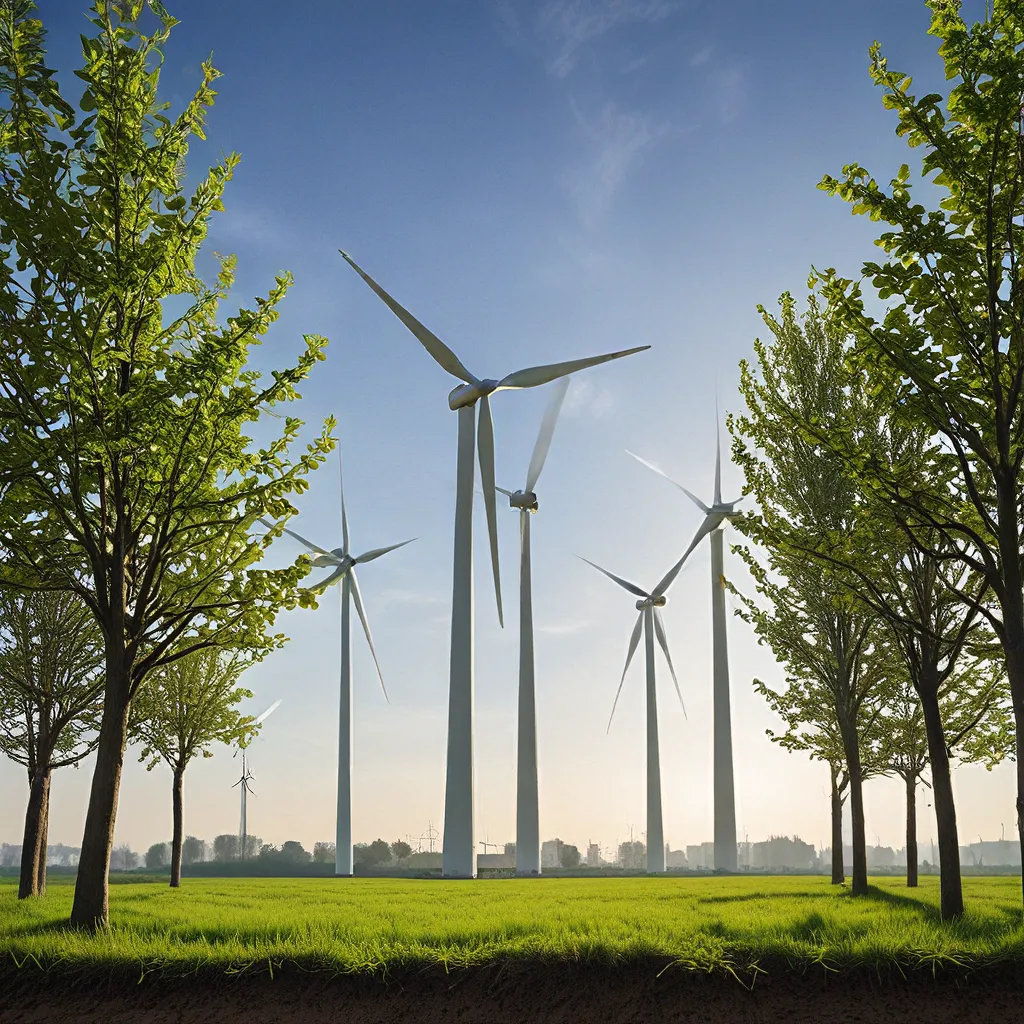
Imagine a world where energy and resources flow in a never-ending cycle, where waste is a thing of the past, and our environmental impact is reduced to a mere whisper. This is the promise of the circular economy, a revolutionary approach that’s poised to transform the way we generate, distribute, and consume power.
The Linear Model’s Achilles Heel
For far too long, we’ve been stuck in the linear trap of “take, make, and dispose.” This traditional model of production and consumption has led to a worrying trend of resource depletion, environmental pollution, and a growing waste crisis. It’s a vicious cycle that’s simply unsustainable in the long run.
But what if I told you that there’s a better way? Enter the circular economy, a concept that’s been gaining traction across various sectors, including the energy industry. By embracing the principles of this innovative approach, we can not only curtail our reliance on finite resources but also forge a path towards a greener, more sustainable future.
Circular Energy: Closing the Loop
At the heart of the circular economy lies the idea of closing the loop. Instead of simply discarding used products, the goal is to repurpose, reuse, and recycle them, keeping materials and components in circulation for as long as possible. This shift in mindset is particularly crucial when it comes to the energy sector.
Design for Durability and Repairability
One of the key tenets of the circular economy is designing products with longevity and repairability in mind. This means creating energy systems, from power plants to household appliances, that are built to last. By extending the lifespan of these technologies, we can reduce the frequency of replacements and minimize waste.
Reuse and Remanufacturing
Imagine giving a second life to your old smartphone or electric vehicle battery. In a circular economy, we strive to repurpose and reintroduce used items back into the market, rather than simply discarding them. This could involve refurbishing and selling certified pre-owned devices or remanufacturing components like engines and transmissions, reducing the need for brand-new parts.
Recycling and Material Recovery
But the circular magic doesn’t stop there. When products do reach the end of their useful life, the focus shifts to recycling and material recovery. By extracting and reintroducing valuable materials like silicon, glass, and metals from discarded solar panels or wind turbines, we can conserve natural resources and reduce the energy-intensive process of extracting and processing virgin raw materials.
Closing Material Loops
The ultimate goal of the circular economy is to minimize waste by ensuring that materials circulate within the system, rather than ending up in landfills. This is where concepts like closed-loop systems come into play. For example, the endless recycling of aluminum cans or the composting of organic waste to enrich the soil, effectively closing the loop on material utilization.
Circular Energy in Action
But how does this circular thinking translate to the energy sector? Let’s dive into some real-world examples that showcase the power of this approach.
Energy-as-a-Service (EaaS)
One innovative business model that aligns with the principles of the circular economy is Energy-as-a-Service (EaaS). Instead of purchasing energy solutions like solar panels or heat pumps outright, customers can now subscribe to these technologies through a service-based model. This shift reduces the financial burden on consumers and encourages responsible use, as the service provider is incentivized to maintain the longevity and efficiency of the equipment.
Repurposing EV Batteries
What happens to electric vehicle batteries once they’ve reached the end of their useful life in the car? In a circular economy, these batteries find new life as stationary energy storage systems, extending their functionality and reducing the need for brand-new storage solutions.
Circular Bioenergy Systems
The circular economy also shines a spotlight on the efficient utilization of organic waste. Circular bioenergy systems convert biomass and organic waste, such as food scraps and yard trimmings, into renewable energy through processes like anaerobic digestion. This not only generates clean power but also promotes the recycling of valuable nutrients back into the soil, closing the loop on organic material utilization.
Overcoming the Challenges
While the circular economy holds immense promise, it’s not without its challenges. Driving this transition requires a collaborative effort and a shift in mindset – from governments and policymakers to businesses and individual consumers.
Policy Support and Incentives
Governments play a crucial role in promoting circular practices. By designing policies that incentivize sustainable behaviors, such as offering tax benefits for recycling and remanufacturing, they can encourage businesses and individuals to adopt circular strategies.
Supply Chain Collaboration
Achieving a successful circular economy also demands seamless collaboration across the entire energy supply chain. Energy companies, manufacturers, and consumers must work together to ensure that products are designed with circular principles in mind, materials are efficiently reused and recycled, and responsible consumption practices are embraced.
Fostering Innovation
Research centers and innovation hubs serve as vital catalysts for circular energy solutions. By supporting the development and implementation of cutting-edge technologies, these hubs drive positive change within the energy industry, paving the way for a more sustainable and resource-efficient future.
Closing the Loop for a Greener Tomorrow
As we stand at the crossroads of environmental awareness and the urgent need for sustainable change, the circular economy emerges as a beacon of hope. By wholeheartedly embracing this innovative approach, we can curtail waste, shrink our ecological impact, and forge a path towards a greener, more resilient energy future.
So, what are you waiting for? Join us on this journey of renewable energy and circular economy as we work together to close the loop and create a better tomorrow for all. Visit Plug n’ Save Energy Products to explore our wide range of energy-saving solutions and take the first step towards a more sustainable future.